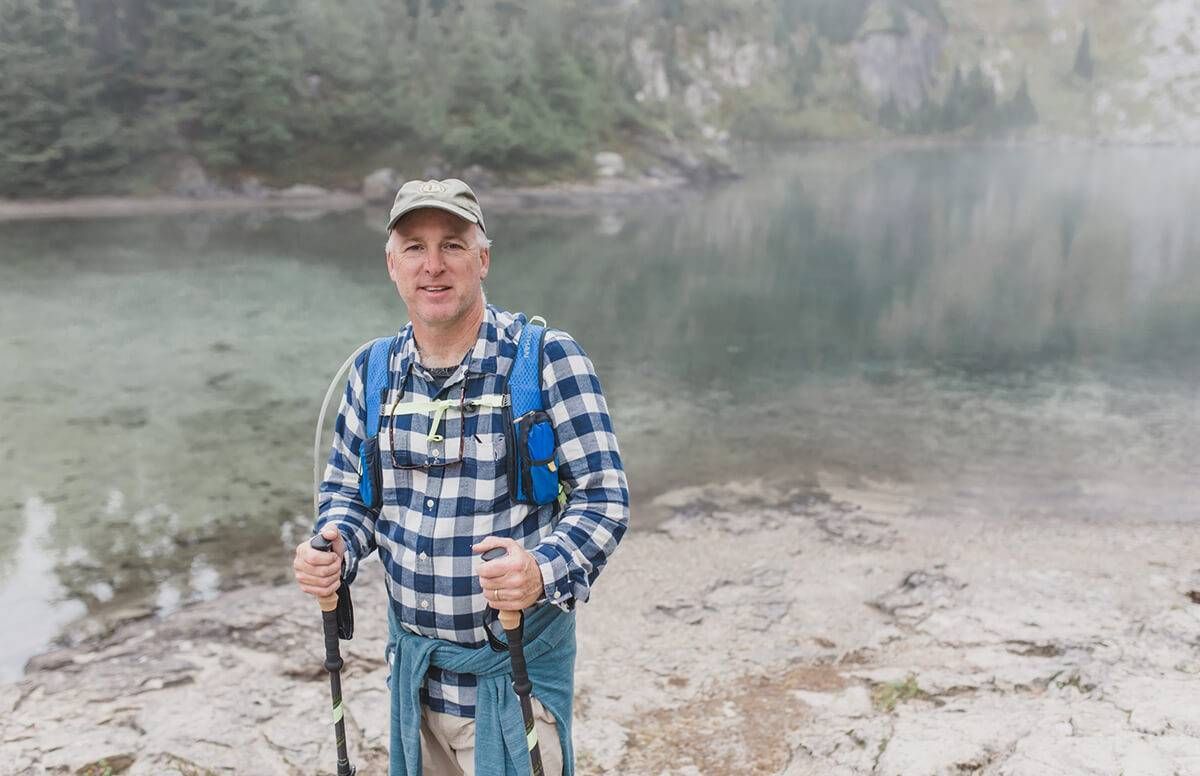A Guide to Taking a Gap Year or Gap Time in Midlife
Some have found that invigorating time off isn't only for young adults
Have you ever wished that you could put your career on hold to travel or volunteer, just like some high school or college graduates do before setting foot on campus or accepting their first job?

While taking a gap year is more common for teens and 20-somethings (see the story "Is Trade School the Best Path for Creatives?" — the first in The Year After series of our sister site for young people, Rewire.org), some people are finding a variety of ways to do it in their 50s and 60s. Many of them say the experience is meaningful, even life-altering.
“The same basic reasons motivate a later-in-life gapper as motivate a younger one,” says Ethan Knight, executive director of the Gap Year Association, a nonprofit based in Portland, Ore. “Burnout, a desire to know more about oneself and a desire to know more about the outside world and its peoples.”
Gap Year or Gap Time?
Once you’re older, though, it can be difficult to take a 12-month break. So, the phrase “gap year” is often a misnomer at that stage in life.
Your 50s or 60s may be ideal for gap time if you have children who've grown or you're in a comfortable place professionally and you have the financial flexibility for a break.
“It really should be called ‘gap time,’” says Holly Bull, president of the Center for Interim Programs in Princeton, N.J., America’s oldest independent gap-year counseling organization. “The value derived from this exploring, short or long, is invariably high: Rest, a sense of renewed excitement about life, being away from home and the familiar, meeting new people, being a traveler rather than tourist, engaging in something substantive with a sense of purpose.” (The Center for Interim Programs is mostly for young adults but, its website says, also counsels “mid- and post-career adults.”)
Your 50s or 60s may be ideal for gap time if you have children who’ve grown or you’re in a comfortable place professionally and you have the financial flexibility for a break.
4 Ways to Take Gap Time in Midlife
Here are four ways to do it:
Voluntourism time. You’ll serve others while learning to adapt to unfamiliar situations and surroundings around the world. Doing so can help you grow spiritually and expand your sense of self.
“Part of a great gap year is about cultivating resilience and not letting yourself fall asleep at the proverbial wheel of life,” Knight says.
Janet Lipsi, 61, a decorative painter in Telford, Pa., arranged her gap time through Interim, volunteering at a children's center in South Africa for two months and then traveling for a week in Africa before returning home. At the center, she provided homeschooling, changed diapers, comforted crying children and led outings.
Lipsi had thought about taking gap time for years before doing it.
“This idea was taking on a now-or-never quality — I was in reasonably good health, but I was well aware that I wasn’t getting any younger,” Lipsi says. “I wanted to go where I was needed. I have experience working with children, and the need [there] was compelling.”
Peace Corps time. There’s no upper age limit to join The Peace Corps (the federal government’s service opportunity in communities abroad created by the Kennedy administration). These days, about 4% of Peace Corps volunteers are 50+.
Most Peace Corps assignments require a 27-month commitment, although some for experienced individuals last three to 12 months.

“Many of our volunteers report feeling like they’ve done something meaningful and stretched themselves beyond what they thought was possible,” says Peace Corps spokesperson Brandalyn Bickner. “They prove to themselves that learning and serving can be a lifelong journey.”
For some midlifers, their Peace Corps stint is their second time around.
Greg Polk, 69, of Albuquerque, first joined The Peace Corps in 1973 at 23, volunteering in Mali. Decades later, he had a work assignment with the Millennium Challenge Corporation — a government foreign aid agency — in Mali and reconnected with The Peace Corps there. That led him to volunteer with the program in Mali again in 2014, at 64.
“As a twenty-something person, it was all about the adventure and all about meeting the challenges — these incredible challenges — of a foreign place and a foreign language,” Polk says. “As a sixty-something volunteer, it was much more about the engagement with the other volunteers, the feeling like I was helping Peace Corps as an organization… and an opportunity to deepen my understanding of Malian life and Malian culture.”
Learning time. Some people take gap time in midlife to gain professional expertise or switch gears career-wise.
“Many seem drawn to… enhancing a skill like writing, photography or a language,” Bull says.
A handful of academic programs can serve as gap-year transitions, moving from one career to a new challenge. For instance, the University of Minnesota Advanced Careers Initiative, which accepts up to 25 adults — called fellows — annually.
“Fellows aim to reimagine the arc of their lives, which may include a new career, part-time work or unpaid community participation,” says Phyllis Moen, founding director of this initiative. “They also grapple with issues of identity: ‘Who am I when I am no longer working in my career job? What are my values and goals? How do I want to spend the next twenty or thirty years?’”
Adventure time. Other gappers travel for fun or seek challenges they delayed while raising children.

Mark Schmitt, 56, a technology executive in Oakton, Va. took an unpaid leave of absence to travel in 2018. Over 10 months, he completed 14 adventures, including living and working in a Scottish castle, a two-week deployment with The Red Cross after Hurricane Florence, hiking the Pacific Northwest with his daughters and going on safari in Africa.
“I wanted to be more of a pilgrim than a tourist,” Schmitt says. “I wanted to experience life and give back. I also figured at 56, I am still in good shape, so I wanted to take advantage of that, too.”
How to Make It Happen
Pulling off a gap year or some gap time takes some planning and money. Here’s advice on how you might be able to do it:
Logistics When You’re in a Relationship. If you have a spouse or partner, that person might keep things running at home, then join you in short excursions. “I have a partner who genuinely supported my plan,” Lipsi says. “[He] even joined me for my final week in South Africa.”
The Financial Side of Things. You don’t need to be wealthy to take some types of gap time. The Peace Corps covers housing, medical and dental expenses and provides a small stipend. Other programs are affordable, too.
“There are a range of placements that provide housing and food for labor or involve a minimum fee,” Bull says.
Adjusting Your Worklife. You might be able to take a break from your job or become a consultant for more flexibility. Schmitt, for instance, recently started a consulting company, which will allow him future gap time.
“I don’t want to retire,” Schmitt says. “[I’m] looking for a good balance of work and play.”
Getting Guidance. Consider contacting a gap-year consultant to find out how to turn your ideas into reality.
Knight says the Gap Year Association has a list of accredited gap-year consultants who work with all generations of gappers. “They are good at being budget-conscious and are particularly adept at helping sleuth out for each individual what would be a great set of experiences that will still be somewhat challenging,” Knight notes. “Because we all know that we feel most alive when we’re on the edge of what’s comfortable.”

